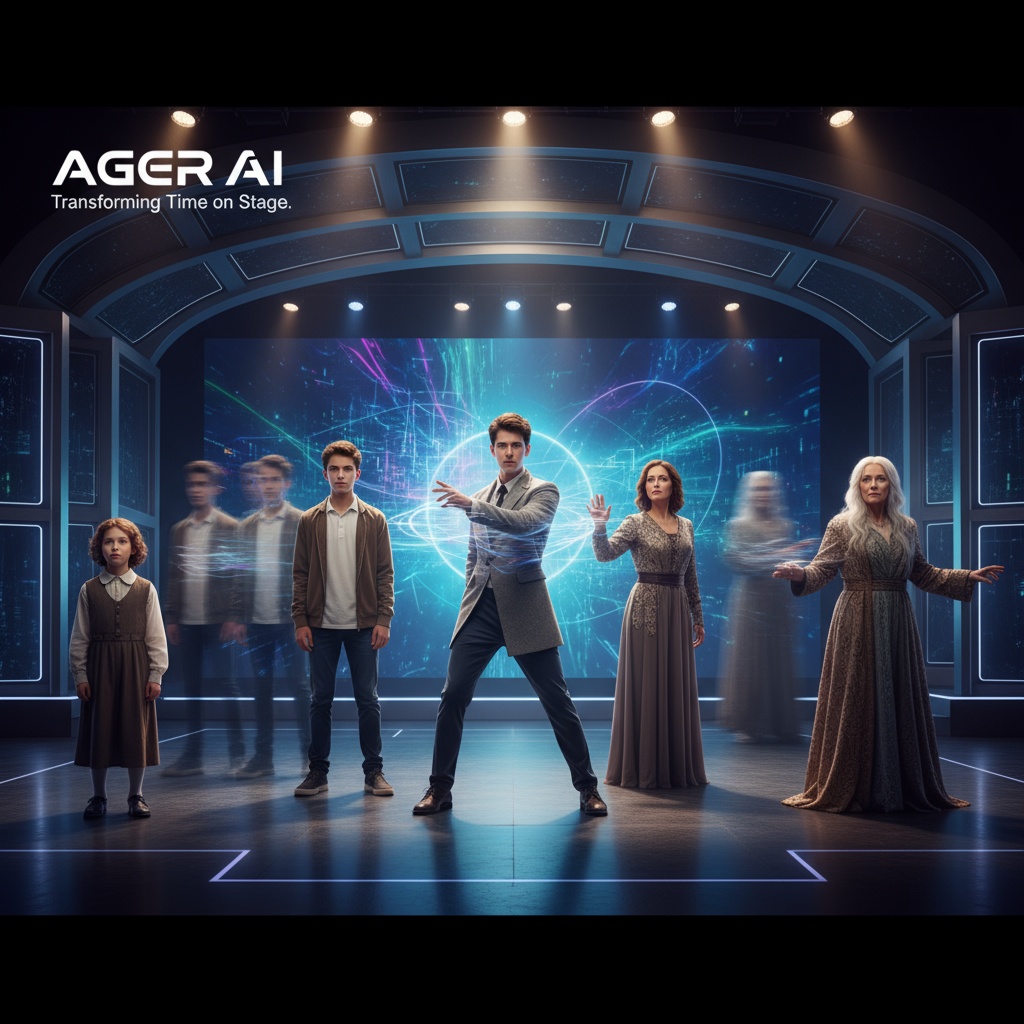Dramatic Aging Effects in Theater with Ager
Ager is an AI tool that drastically enriches theatrical productions by applying age transformations to actors. Discover how this technology can enhance storytelling and audience engagement in live performances.

Unveiling Ager in Theatrical Productions
Theater is a realm where storytelling comes to life through the personification of characters and the unfolding of narratives on stage. One challenge faced by theater productions is portraying characters that age throughout a story—a crucial facet in plays traversing significant time spans. The AI tool, Ager, offers a fresh solution by allowing actors to vividly embody their characters at varying ages without relying heavily on traditional makeup or costuming.
Problem Solved: Realistic Age Portrayal
Typically, plays that span decades or even centuries require artists to spend hours each night in makeup chairs, repeatedly applying and removing prosthetics and intricate details to depict aging. This labor-intensive process can be costly and introduces variability to each performance. Ager tackles this problem by simulating age effects with high precision, rendering actors as younger or older versions of themselves through stunningly lifelike visual transformations.
A Concrete Use Case: "The Great Gatsbys Age-Defying Performances"
Consider a theatrical production of The Great Gatsby, where characters must appear significantly younger and older as the storyline shifts through past and present. This play challenges actors to convincingly portray these age shifts to maintain narrative fidelity and audience engagement.
With Ager, production teams can seamlessly communicate these transformations. Actors undergo a simple photography process where their likeness is captured, and the Ager tool generates a series of age variations. These can then be projected onto a backdrop or screen, allowing the audience to see dramatic age transitions live. Here's how it can be implemented:
- Photograph the Cast: Capture high-quality images of your actors in character portraits.
- Apply Ager's Transformations: Use Ager to create an array of age-progressed images showcasing the anticipated changes.
- Integrate Visuals in Performances: Project these transformations during pivotal scenes, allowing audiences to witness the seamless transition from youth to age, enhancing suspension of disbelief.
This application allows directors to enhance the authenticity of narratives while also reducing the physical toll on actors, ensuring consistent portrayals across performance nights.
Practical Tips for Using Ager in Theater Productions
- Customize Characters' Age Journeys: Discuss with your cast how their characters' age progression aligns with their story arcs, ensuring the transformations reflect psychological as well as physical evolution.
- Synchronize Audio-Visual Cues: Align the age transformations with soundscapes and lighting changes to create a fully immersive audience experience.
- Use in Rehearsals: During rehearsals, display age transformations to help actors get into character and explore different physicalities as they 'age' on stage.
Conclusion: Transforming Theatrical Storytelling with Ager
By integrating Ager into theatrical productions, directors and actors gain a versatile tool to challenge traditional staging conventions and open new avenues for storytelling. The seamless integration of aged characters on stage captivates audiences, enhancing the realism and depth of live performances, ensuring unforgettable theatrical experiences.
